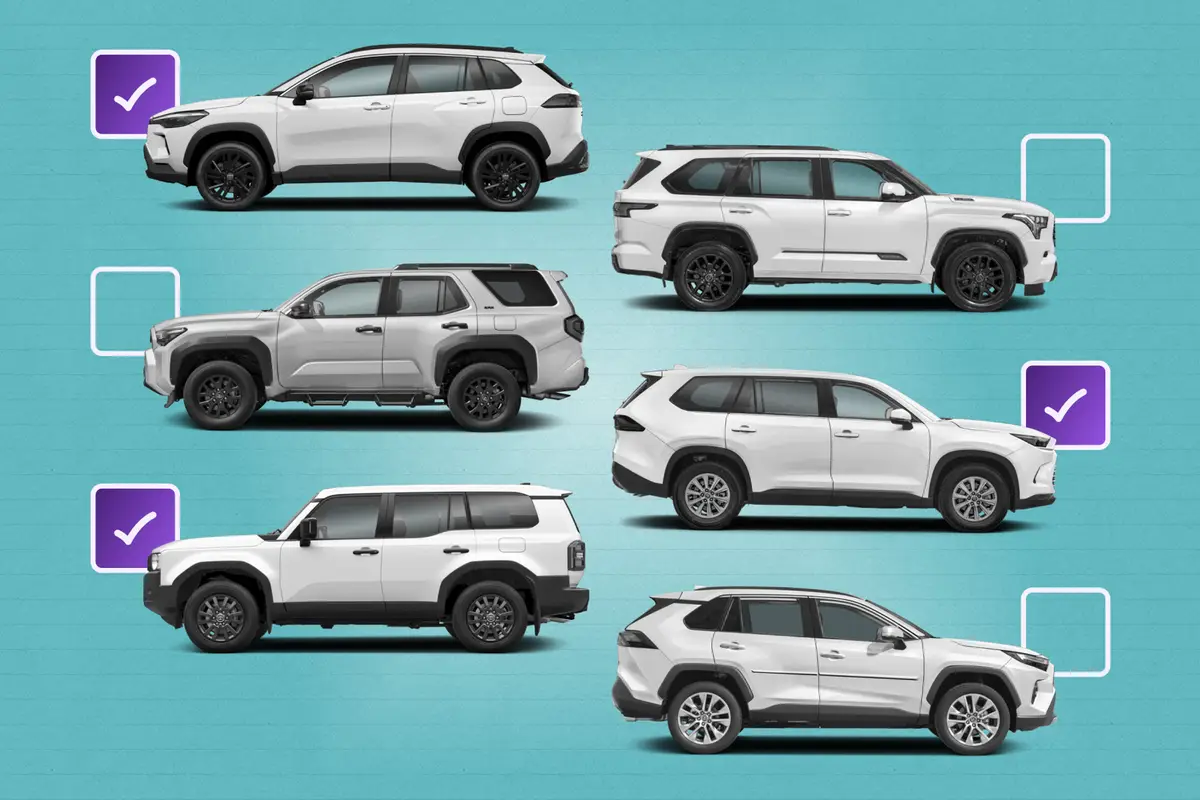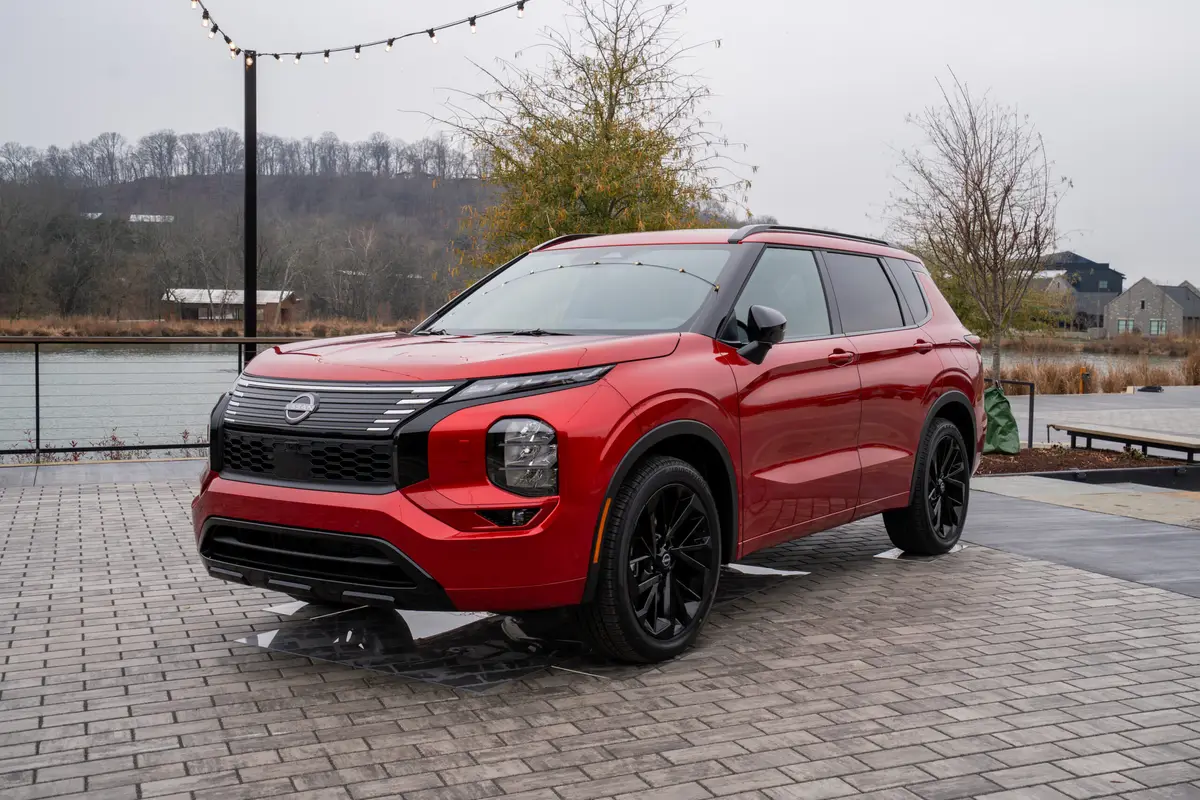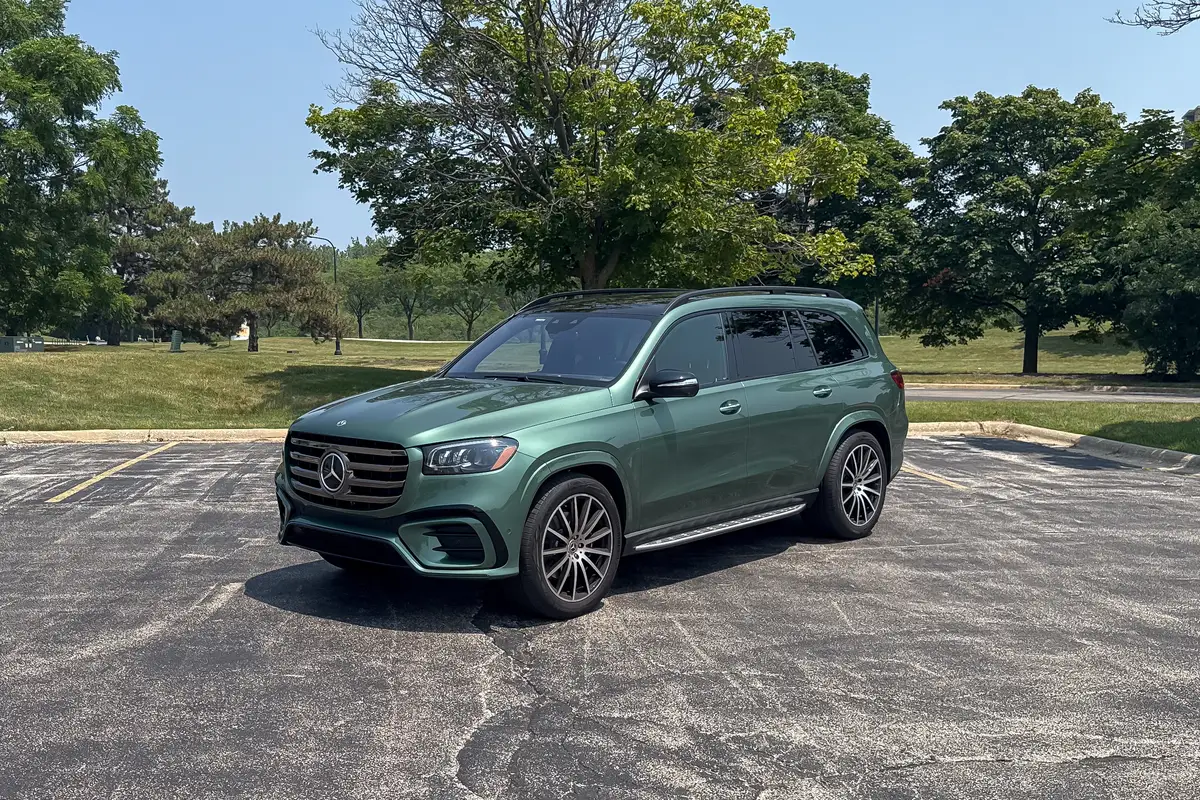What's the 2025 Ford Maverick Lobo Like on a Track?

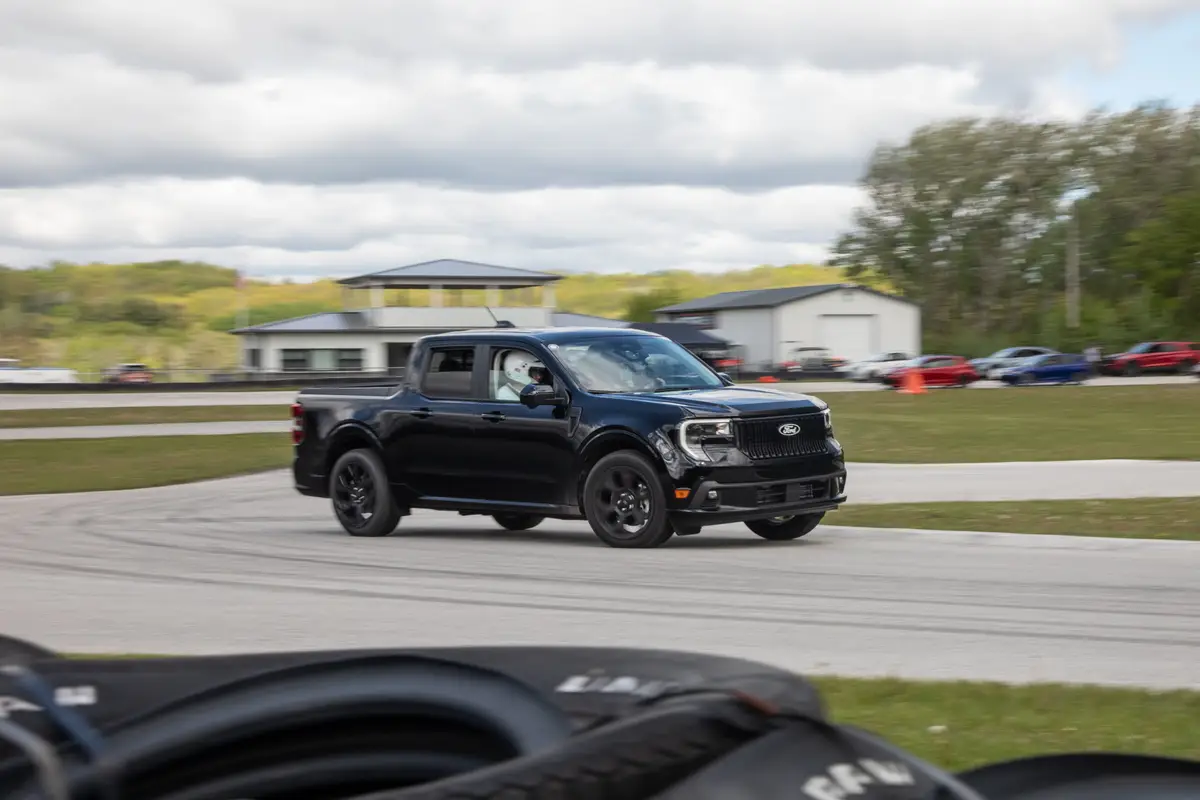
As part of the Ford Maverick’s nicely executed refresh for 2025, the automaker introduced a new Lobo trim level that revives a mostly dormant breed: the street-performance pickup truck. Factory-stock performance trucks are almost entirely off-road-oriented these days — think Chevrolet ZR2, GMC AT4, Ford Raptor, Toyota TRD Pro and Ram RHO — but throughout the 1990s and early 2000s, several automakers offered street-focused sport trucks of varying performance levels. The popular, versatile and affordable Maverick is well positioned to bring back the street truck; it’s a fantastic canvas for customization of all kinds, and its clever architecture enabled Ford to add on-road performance upgrades by cherry-picking its corporate parts bins.
Related: Livin’ La Vida Lobo: Life With Ford’s New 2025 Maverick Sport Truck
The Lobo comes with the Maverick’s available 250-horsepower, turbocharged 2.0-liter four-cylinder engine, but it replaces the eight-speed automatic transmission seen in other trims with a quicker-shifting seven-speed automatic shared with the European-market Focus ST. Upsize dual-piston front brake calipers are also from the Euro Focus ST, while a quicker steering rack was plucked from the Euro-market Kuga SUV. The Lobo’s torque-vectoring, twin-clutch rear differential is shared with the off-road-oriented Maverick Tremor and Bronco Sport.
So, how do all of these upgrades enhance the Lobo’s performance? Cars.com West Coast Bureau Chief Conner Golden drove the Lobo as part of the 2025 Maverick’s press preview event, and Detroit Bureau Chief Aaron Bragman added his impressions after living with one for a week. And recently, Managing Editor Joe Bruzek and I got some on-track seat time in a Maverick Lobo at the Midwest Automotive Media Association’s 2025 Spring Rally in Elkhart Lake, Wisc. Joe and I took the Maverick Lobo for our own laps on a wet Road America racetrack (cursing the day’s nonstop rain as we did), and the following day, I made a couple of passes on a (thankfully dried out) autocross course.
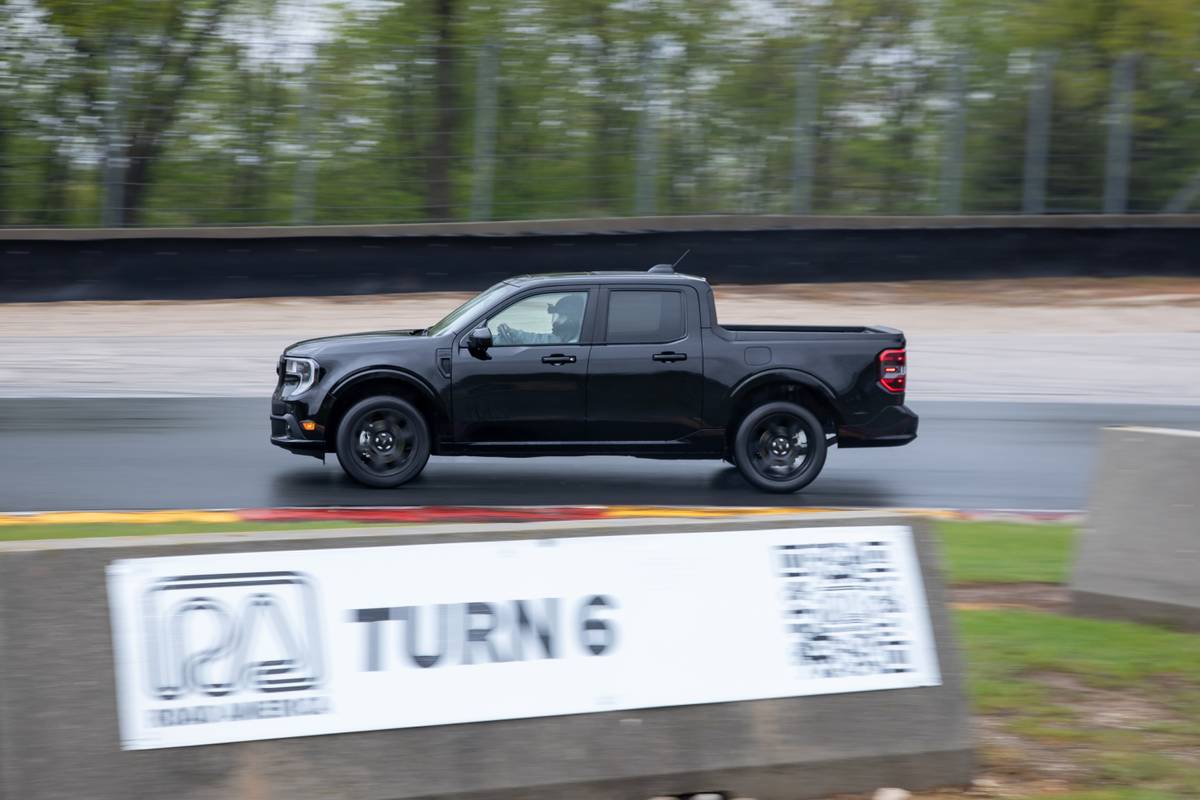
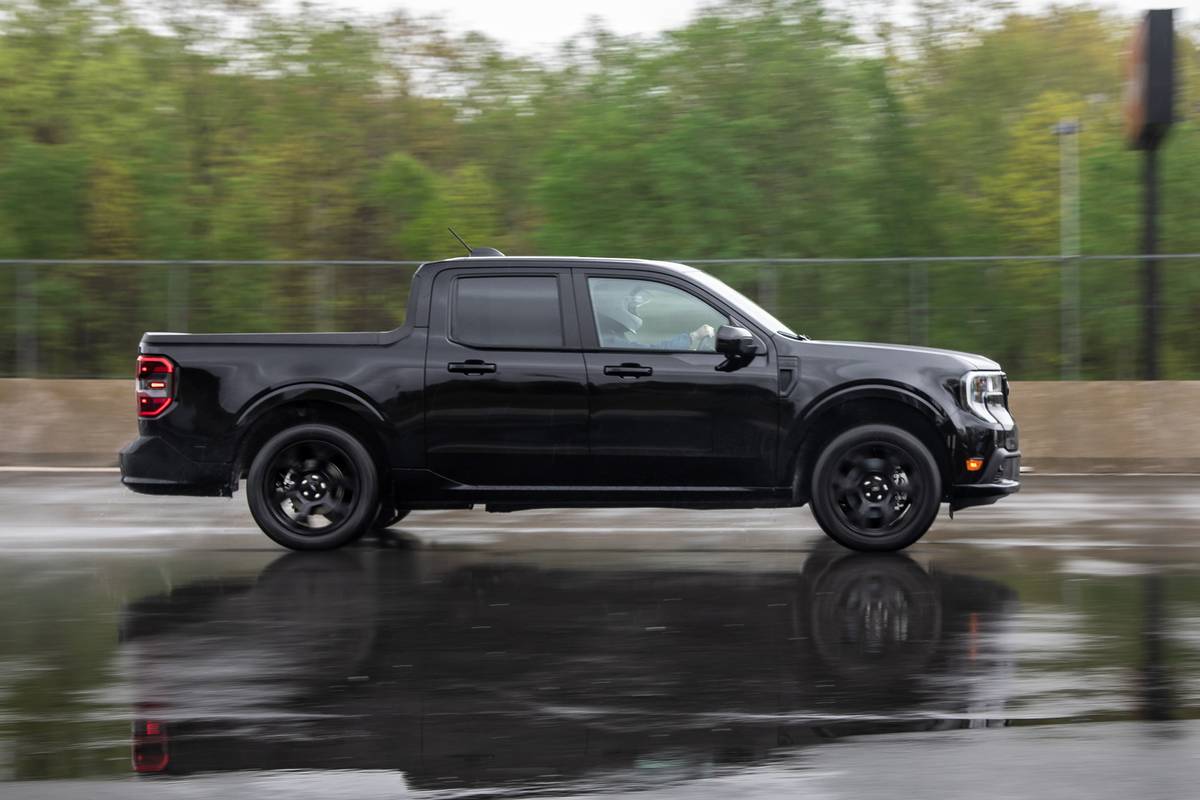
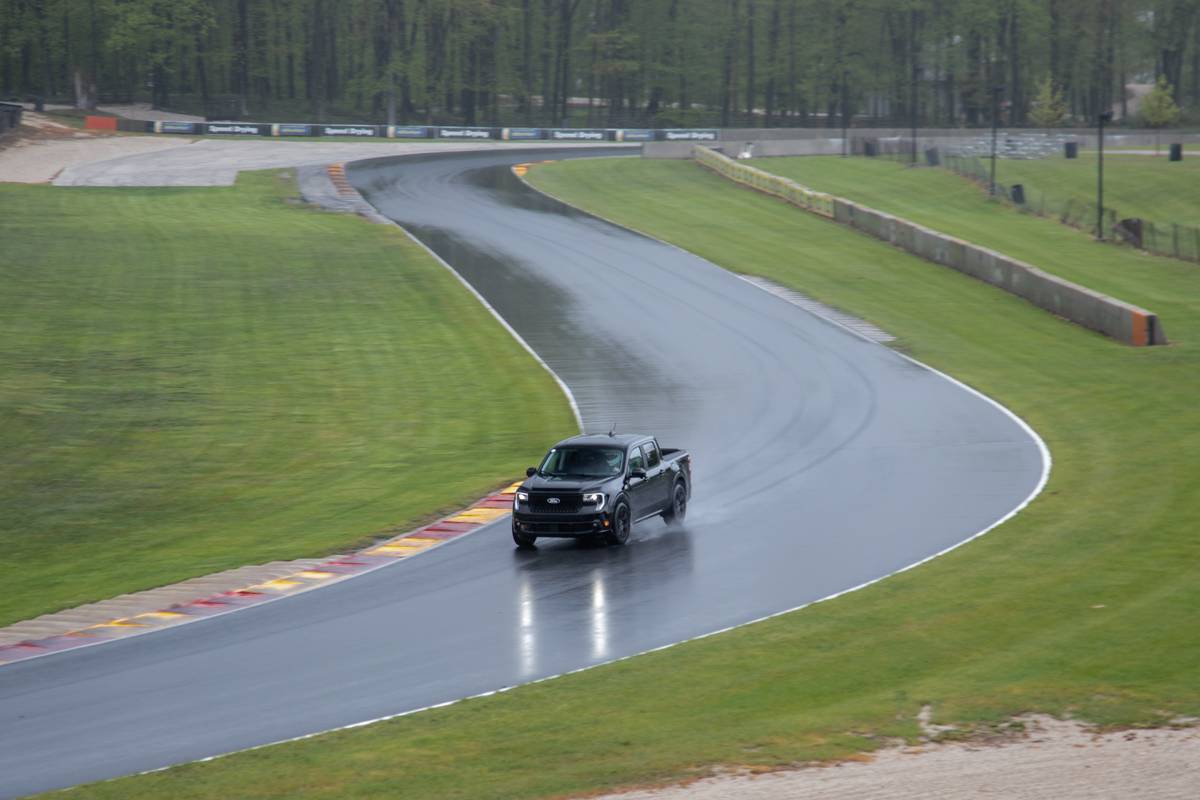



How Does the Ford Maverick Lobo Handle on a Racetrack?
Bruzek summed up his experience thusly:
“The idea of the Maverick Lobo was enticing from the start because the Maverick with the turbocharged four-cylinder is a firefly little truck. Plus, I love the bygone sport trucks category (remember the V-8-powered Chevrolet Colorado ZQ8? So cool). I only experienced the Lobo at Road America on the big track, where it felt competent but not necessarily engaging. It was a one-and-done drive, not especially fun enough to take on another lap like a Volkswagen Golf GTI or Subaru BRZ that were also available for exhibition-type hot laps around the track. And I think that has more to do with Road America’s huge layout with long straights not being a great showcase of the Lobo versus the Lobo not being good at its mission. On the big track, the Lobo merely felt like a compact unibody truck doing compact unibody truck things; I wouldn’t expect a compact sport truck to rip through the Carousel flat and composed. I’ll reserve final judgement until I can drive the Lobo on the street.”
My on-track experience echoed Joe’s. Even though the Road America track was truncated for our media event and speeds were kept in check by coned chicanes on the long straights, the Lobo didn’t feel particularly fast, though its all-wheel drive helped it corner respectably well in the rain. Even so, the wet pavement put the kibosh on really pushing the Lobo’s capabilities.
We had better luck with the weather on the autocross course the next day.
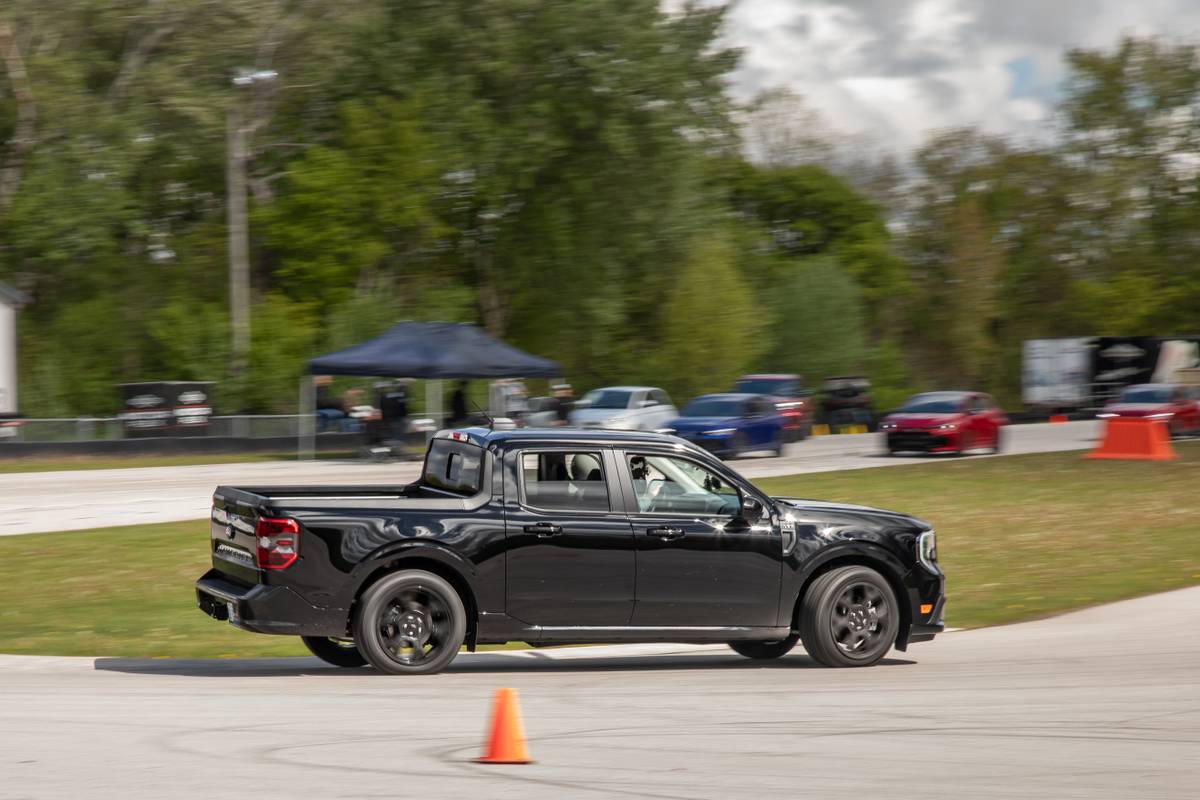
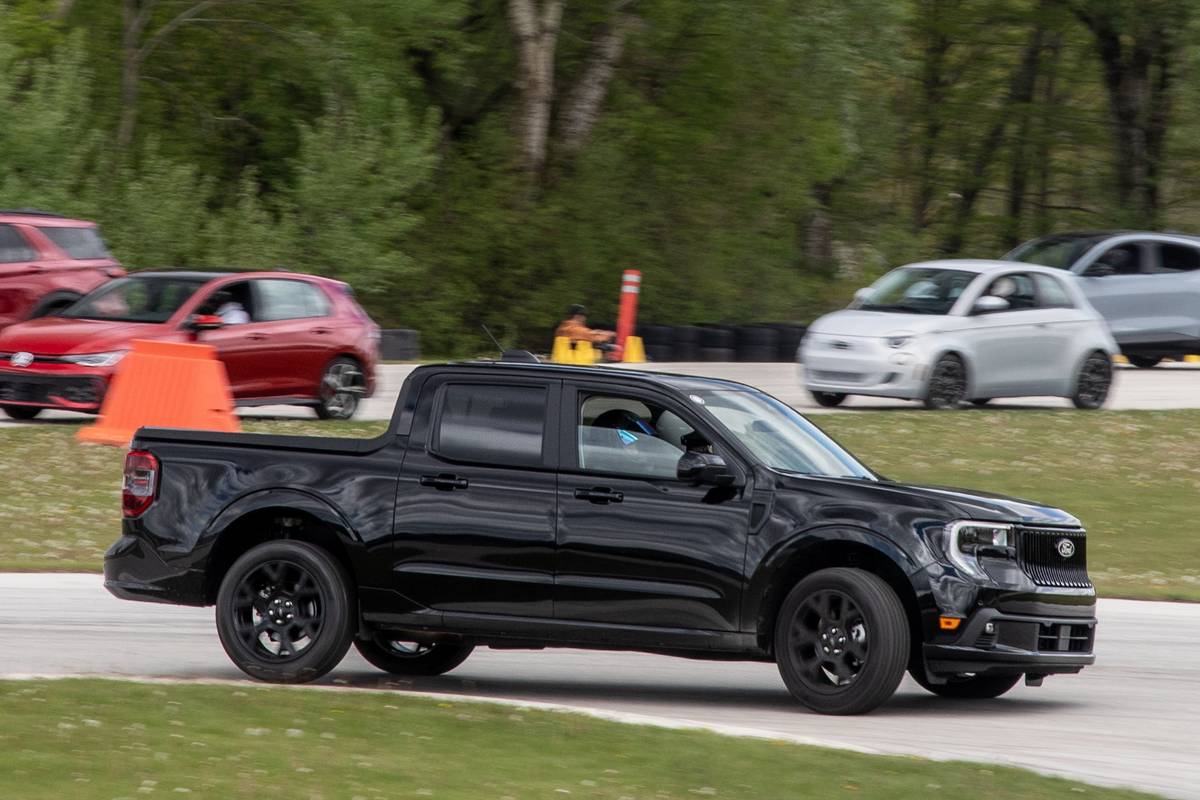


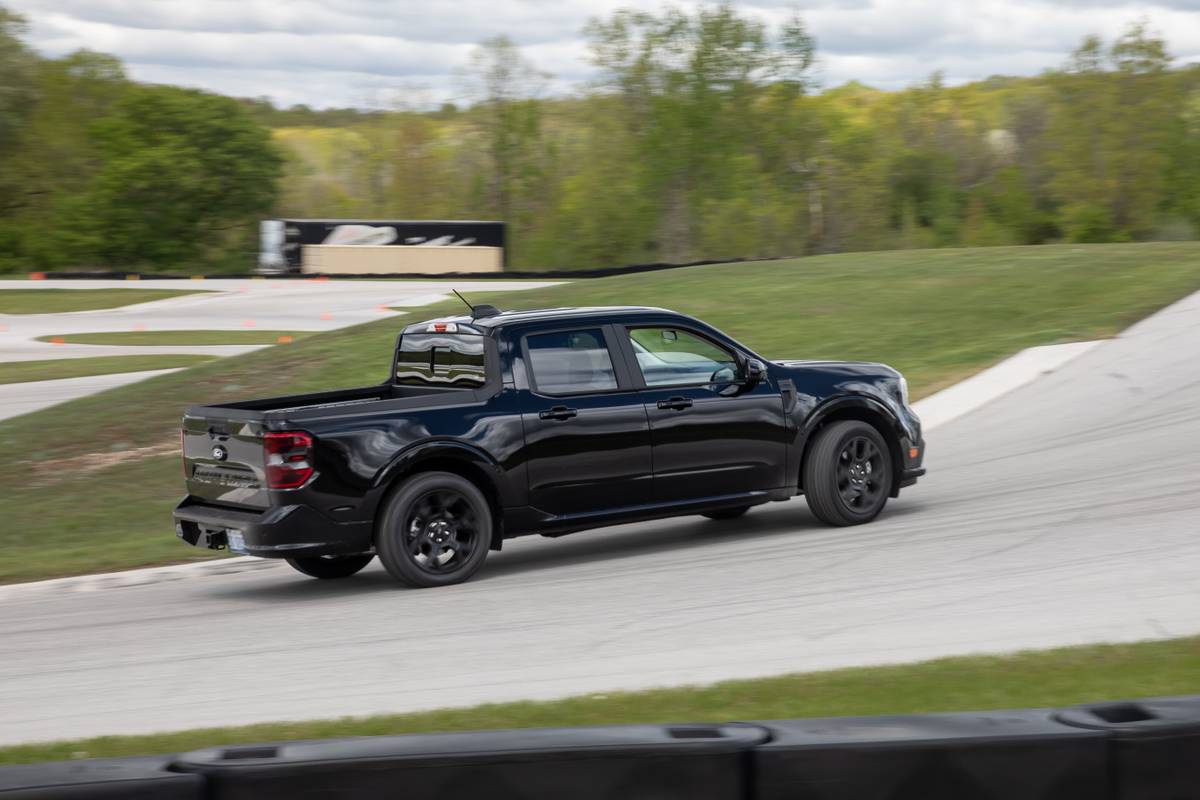





How Does the Ford Maverick Lobo Handle on an Autocross Course?
I took a couple of passes on an autocross course that was set up on Road America’s Briggs & Stratton Motorplex track. This isn’t your typical parking-lot autocross course; it’s a large, configurable go-kart track with a variety of corners and significant elevation changes. It demands a bit more caution since you’ll be off the track and in the grass if you really mess up.
I was hoping the Lobo would really shine on this tight, short course, and I drove it back to back with a Mini Hardtop John Cooper Works, Toyota GR Corolla and VW Golf GTI and Golf R. Perhaps not surprisingly, the Lobo paled in comparison to those world-class compacts in both power delivery and cornering prowess. Its accelerator response wasn’t as quick, and I experienced pronounced understeer in the corners even though I had the Lobo drive mode activated. Ford says Lobo mode, which is meant for closed-course use only, reduces stability system intervention and activates the torque-vectoring rear end for improved cornering performance.
I was hoping the Lobo’s traction would be better with its standard AWD, but the truck’s Goodyear Wrangler Territory HT tires — workaday all-season rubber — probably did its on-track grip no favors. A stickier set of summer performance tires would make a big difference here.
More From Cars.com:
- 2025 Ford Maverick Up Close: It Just Keeps Getting Better
- Which of the Detroit Big Three’s Trucks Has the Top Tailgate?
- Our Long-Term 2022 Ford Maverick Hybrid Is Gone, But We Still Love It
- What It’s Like Towing With a 2022 Ford Maverick Hybrid
- Shop for a 2025 Ford Maverick Near You
A Platform for Further DIY Tuning?
For a good number of enthusiast owners, a set of performance tires will be just the start. As both Aaron and Conner point out in their reviews, the Lobo seems tailor-made for additional performance and style modifications.
Off the showroom floor, the Lobo is about as zingy and agile on the street as a new pickup truck gets, but a Golf GTI delivers sharper all-around performance for about $4,000 less to start. However, in the VW, you won’t get AWD, the versatility of a pickup bed or the subversive glee of hustling a pickup truck around a track.
Related Video:
Cars.com’s Editorial department is your source for automotive news and reviews. In line with Cars.com’s long-standing ethics policy, editors and reviewers don’t accept gifts or free trips from automakers. The Editorial department is independent of Cars.com’s advertising, sales and sponsored content departments.

Senior Research Editor Damon Bell has more than 25 years of experience in the automotive industry, beginning as an Engineering Graphics researcher/proofreader at model-car manufacturer Revell-Monogram. From there, he moved on to various roles at Collectible Automobile magazine and Consumer Guide Automotive before joining Cars.com in August 2022. He served as president of the Midwest Automotive Media Association in 2019 and 2020.
Featured stories
